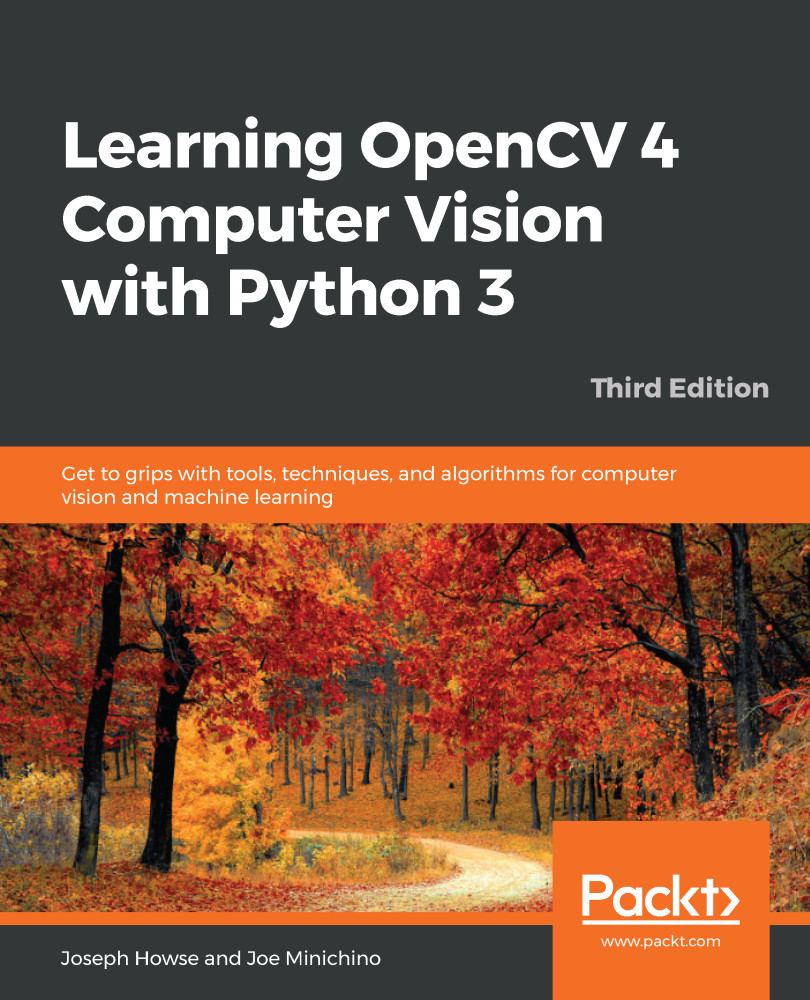This chapter delves deeper into the concept of object detection, which is one of the most common challenges in computer vision. Having come this far in the book, you are perhaps wondering when you will be able to put computer vision into practice on the streets. Do you dream of building a system to detect cars and people? Well, you are not too far from your goal, actually.
We have already looked at some specific cases of object detection and recognition in previous chapters. We focused on upright, frontal human faces in Chapter 5, Detecting and Recognizing Faces, and on objects with corner-like or blob-like features in Chapter 6, Retrieving Images and Searching Using Image Descriptors. Now, in the current chapter, we will explore algorithms that have a good ability to generalize or extrapolate, in the sense that they can cope with the real-world...


